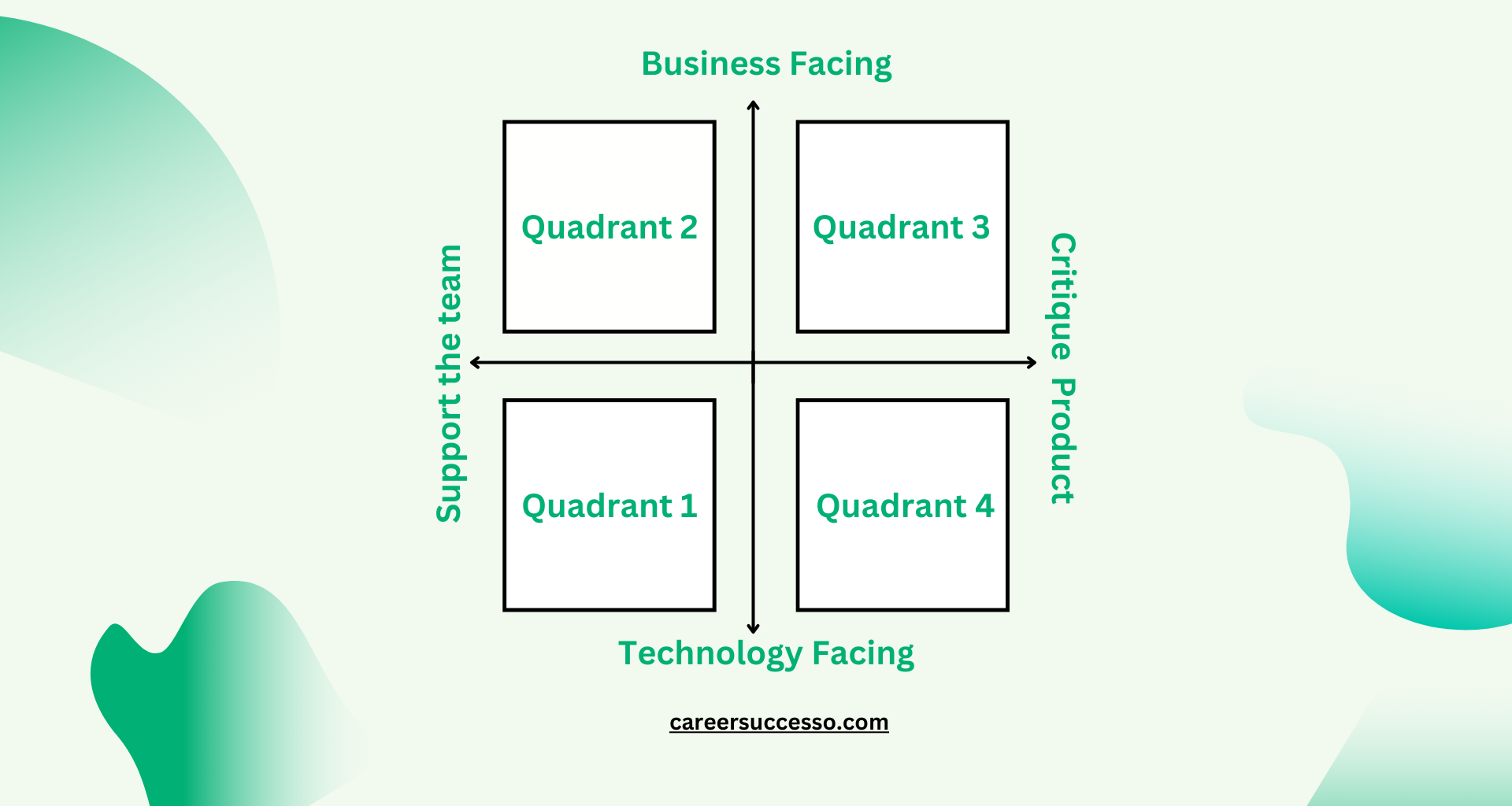Understanding Testing Quadrants in Agile Development

Testing is a crucial aspect of software development that ensures the product meets the desired quality and performance standards. In Agile development, Brian Marick's testing quadrants framework offers a comprehensive approach to categorizing and managing tests. This model helps teams visualize and implement a variety of test types and techniques across different levels of the software development lifecycle (SDLC). Here is a detailed look at the four quadrants, each with its unique focus and purpose.

Quadrant 1: Technology-Facing Tests that Support the Developers
Focus: Unit Testing, Continuous Integration
Characteristics:
- Type of Tests: Unit tests and component integration tests.
- Automation: These tests are highly automated and integrated into the continuous integration (CI) process.
- Purpose: To support developers by ensuring that individual components and their interactions work correctly. They provide immediate feedback during the development process.
Examples:
- Unit Tests: Validate individual components or functions in isolation.
- Integration Tests: Check interactions between different components or systems.
Advantages:
- Early Detection: Helps in identifying defects at the earliest stage of development.
- Continuous Feedback: Supports frequent integration and deployment cycles.
Quadrant 2: Business-Facing Tests that Confirm Product Behavior
Focus: Functional Testing, Acceptance Criteria
Characteristics:
- Type of Tests: System-level tests including functional tests, user story tests, acceptance criteria verification, and simulations.
- Automation: Can be either manual or automated, depending on the context and complexity.
- Purpose: To ensure that the system behaves according to business requirements and user expectations.
Examples:
- Functional Tests: Validate that features work as intended.
- User Experience Prototypes: Simulate real-world usage to assess functionality and usability.
Advantages:
- Alignment with Business Goals: Ensures that the product meets the acceptance criteria and user needs.
- Regression Testing: Allows for the validation of existing functionalities against new changes.
Quadrant 3: Business-Facing Tests that Critique the Product
Focus: User Acceptance, Usability
Characteristics:
- Type of Tests: Exploratory testing, usability testing, user acceptance testing (UAT), alpha and beta testing.
- Approach: These tests are typically manual and focus on user experience and satisfaction.
- Purpose: To critique the product from a user perspective and ensure it meets the expectations and provides a positive experience.
Examples:
- Exploratory Testing: Testers explore the application without predefined test cases to discover unexpected issues.
- Usability Testing: Assesses the ease of use and user interface.
Advantages:
- User-Centric: Provides insights into how real users interact with the product.
- Feedback for Improvement: Highlights areas for enhancement based on user experience.
Quadrant 4: Technology-Facing Tests that Critique the Product
Focus: Non-Functional Testing
Characteristics:
- Type of Tests: Performance tests, load tests, stress tests, security tests, and other non-functional tests.
- Automation: Typically automated due to the nature of the tests and the need for repeated execution.
- Purpose: To evaluate the product’s behavior under various technical conditions and ensure it meets performance and security standards.
Examples:
- Performance Testing: Assesses the system’s responsiveness and stability under load.
- Security Testing: Identifies vulnerabilities and ensures data protection.
Advantages:
- System Reliability: Ensures that the system can handle expected workloads and security threats.
- Scalability: Validates that the system can scale according to requirements.
Conclusion
The testing quadrants framework provides a structured approach to testing in Agile development by categorizing tests into four distinct types: technology-facing or business-facing, and supportive or critical of the product. By leveraging this model, teams can ensure a balanced approach to testing, addressing both technical and business aspects of the software, and ultimately delivering a high-quality product that meets both developer and user expectations.





